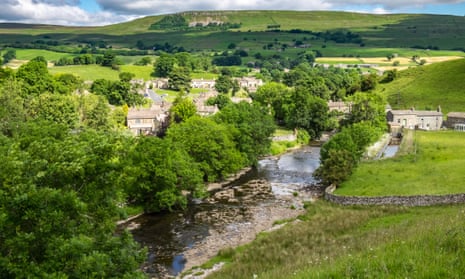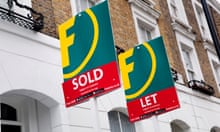Bainbridge is one of the prettiest villages in the Yorkshire Dales, with its wide open village green, ancient stocks and shady trees. But it is also at the heart of what many expect to be the next boom in property investment, as speculators deterred from traditional buy-to-let by new taxes and lending criteria pour into holiday lets instead.
Since April buy-to-let investors have faced new taxes on their rental revenue, while at the same time the Bank of England has enforced stricter lending requirements on the banks issuing the loans – with the result that buy-to-let lending is down by half this year.
Now investors are turning to furnished holiday lets, which enjoy an abundance of tax benefits that no longer apply to traditional buy-to-let. The companies promoting holiday lets as an investment say that while Cornwall and Devon remain firm favourites, the best value is to be found in the Yorkshire Dales, in Wensleydale villages such as Bainbridge, Askrigg and Hawes.
The tax treatment of furnished holiday lets is startlingly generous. If you buy a property and let it out for holiday use, you can still set your full mortgage interest repayments against tax, unlike under the rules that have hit buy-to-let. You can also kit out the cottage to a luxury standard and deduct the entire cost from your pre-tax profits. A major tax loophole means you also don’t have to pay council tax on the property, and can almost certainly avoid local business rates. You can even run the income into your pension and obtain tax relief. And when you come to sell it you can qualify for a whole range of reliefs that mean any capital gains tax is minimised. About the only tax barrier for investors is the 3% additional stamp duty that applies to any second home purchase.
Alistair Malins runs Second Estates, which promotes holiday lets as an investment. “It’s very buoyant at the moment. A lot of attention has moved away from buy-to-let because of the tax changes, with people investing in holiday lets as an alternative. People who have in the past invested in city centre flats for buy-to-let are also finding that prices have plateaued and are now looking at places further afield, particularly in areas where there is limited stock and prices are resilient. The fall in the pound has also helped as it is encouraging people to go on holiday in the UK.”
He points to Newquay in Cornwall where he has let a three-bed holiday home close to the beach for £1,900 a week across the entire peak summer period. “We’re currently looking at properties where the gross yield is around 12%,” he says. But unlike standard buy-to-lets, holiday homes also come with high costs, as they have to be managed for regular visitors. Malins’ rule of thumb is that as much as half the annual income can be swallowed up with costs, but that still leaves investors earning about 6% a year – far more than most other property investments.

“In Cornwall you get very high peak prices in summer, but it trails off a lot in winter. In the Yorkshire Dales we find that properties get booked up all year round. There are still some pockets of value in south-west England, but you get fantastic value in places such as Hawes and Askrigg.”
But the view from Bainbridge, almost equidistant between those villages, is rather different. Yvonne Peacock is from a family of Bainbridge farmers and is the local councillor and leader of Richmondshire district council. She says that 4,000 out of the 20,000 properties in the Yorkshire Dales are second homes. “This is a big problem for us. People who want to live here and work here can’t afford to buy a home. And the level of rents are also so high that our young people can’t even afford to rent.”
But while investors are driving up property prices, she draws a distinction between holiday lets and second homes. “Holiday cottages are important for business as they bring tourists in. But second homes are left empty for much of the year and don’t bring any benefit.”
Peacock is closely watching developments in St Ives, Cornwall,regarded as the frontline in the battle over second homes. Following a poll supported by 83% of local residents, St Ives banned outsiders from buying newly built homes in the area. A legal challenge by property developers was fought off, and several other Cornish villages are now seeking to impose similar bans.
At Second Estates, Malins says: “The number of second homes in the UK is just 1% of the overall housing stock. There are certain areas such as St Ives which are putting limits on new homes sold to second home buyers – and that’s entirely fair. What we are doing is making sure that our properties are filled with holidaymakers and therefore they have a positive impact on local businesses and jobs.”
Mortgage brokers say that the take-up of loans for holiday lets is increasing fast, albeit from a low base. Interest rates charged are also generally higher than on standard buy-to-let loans.
Leeds building society is the biggest lender in the holiday let market. It says: “Since we launched our holiday let range in July 2013 we have seen a year-on-year increase in demand. Rental yields can be significantly higher when compared with buy-to-let, but location is very important, the cost to purchase may be high and there are some additional costs that you wouldn’t get with a buy-to-let – for example, a weekly cleaner, loo rolls and, potentially, managing agents’ fees.”
Leeds charges 2.59% interest on its two-year fixed holiday let mortgage, rising to 3.3% on its five-year deal, plus a £999 product fee. That compares with the 1.54% for the current lowest rates on buy-to-let two-year fixes, and 2.29% on five-year deals.
Anyone buying a holiday let also has to put down a hefty deposit of at least 30% of the purchase value of the home. Leeds will also want proof that the holiday rental income will be equal to at least 140% of the interest payable on the mortgage, and you will have to prove that you can afford the loan even if the interest rate rises to 5.5%.

If someone was to take out a £200,000 holiday home loan from Leeds BS, its criteria suggest that the borrower would have to achieve an annual rental income of more than £15,000 a year to have any chance of obtaining a loan.
David Hollingworth of mortgage broker London & Country says other lenders granting holiday let loans include Principality building society, which has rates starting at 2.2%, Furness building society and Monmouthshire.
Most buy-to-let lenders won’t consider holiday lets, he says, because they require that the property is let on an assured shorthold tenancy of between six and 12 months, which clearly doesn’t work for holiday lets. He adds that lenders will also want to ensure that the home is a standard property, so will not consider those in holiday parks.
“We’ve seen quite a big increase in holiday home mortgages, but from a low level,” says Ray Boulger of broker John Charcol. “The financial situation has changed significantly in favour of this type of property in the past year, and if you are prepared to put in the extra work it requires, then holiday lets are clearly more attractive than buy-to-lets.”
To qualify for all the tax advantages, holiday home owners must follow a number of rules. HM Revenue & Customs says the property must be available for letting for at least 210 days in the year, and be let for at least 105 days. But unlike conventional buy-to-lets, an investor in a holiday home can also use it for their own holidays for as much as 20 weeks a year.
Leaping through tax loopholes
A legal loophole means that holiday home owners avoid paying both council tax and business rates, depriving local authorities of much-needed cash.
A furnished holiday home let for at least 140 days a year is regarded as a business, so there is no council tax to pay. But owners are also entitled to 100% relief on business rates if the property has a rateable value of less than £12,000. Consultants Colliers International analysed the potential rate bill of 7,300 holiday homes in Cornwall and found that more than 7,150 of those second home owners had properties with a rateable value of less than £12,000, so were paying no business rates.
Colliers calculates that the loophole means holiday home owners are subsidised in Cornwall alone by about £13.2m (if they were forced to pay business rates) or £14.6m (if they were required to pay council tax).
John Webber, head of rating at Colliers, said: “It’s a scandal that those who have holiday homes and rent them out are able to take advantage of the small business rates relief and so pay less tax, putting the burden of the rates bill on to other businesses who are struggling to pay their bills.
“We do not criticise second home owners who take advantage of this tax break – that could be considered sensible tax planning. But we do criticise that the government has allowed this situation to happen and has ignored the rating industry’s calls for root-and-branch reform of the business rates system.”











Comments (…)
Sign in or create your Guardian account to join the discussion